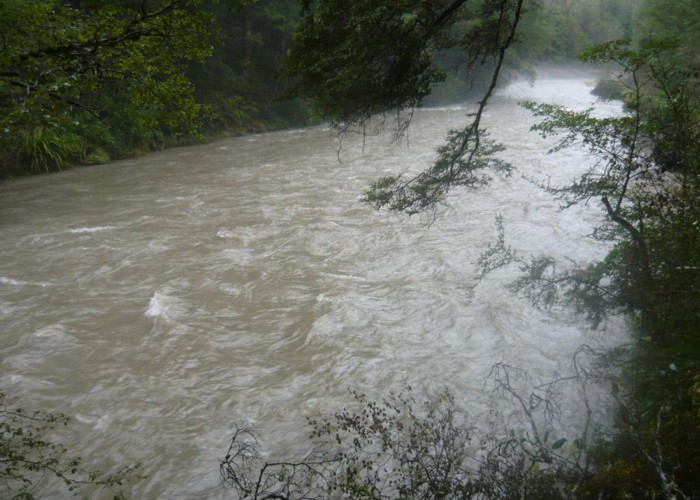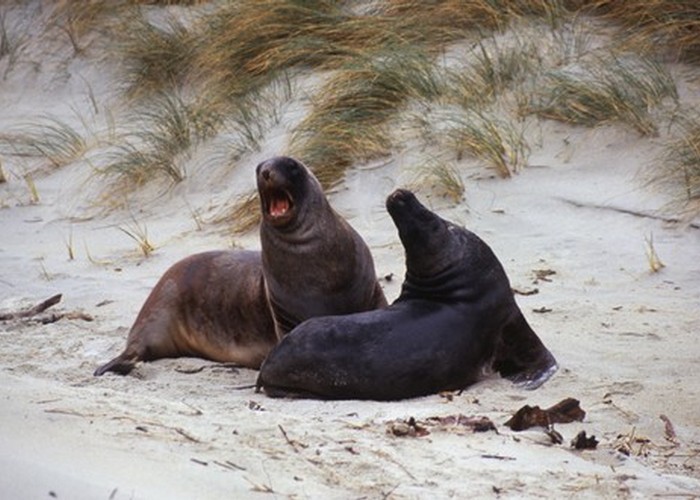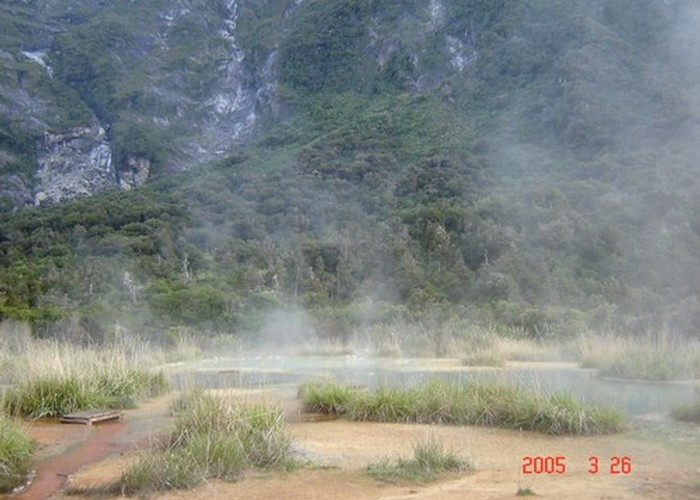To keep yourself safe and having a great time, you need to be aware of the risks you are taking. This page can't cover everything you need to know, and it certainly can't teach you good judgement. But it's a place to start.
Eisenhower said, "Plans are nothing; planning is everything." This is excellent tramping advice. It means: plan well, but be prepared to change your plans to keep your party safe and happy.
Remember that the three classic ways to die in the New Zealand backcountry are drowning, hypothermia, and falls. Look out for those three hazards.
Rivers
If in doubt, wait it out!
With such a short distance from mountains and sea, New Zealand rivers rise and fall quickly. If you cannot see the bottom or if you feel rocks moving past your feet, do not cross.

If you decide the river is safe to cross, form a line of people with the strongest person upstream, place your arms between your neighbours' backs and packs and grab the straps on the far side. Cross diagonally downstream, moving with the current. Do not take your boots off! Nobody died of wet feet.
Find out more about river crossing: River Crossing 101
Hypothermia
Hypothermia is another serious hazard. It occurs when your core body temperature drops. It can be caused by exhaustion, getting wet, and having inadequate warm clothing. Symptoms include sluggishness and confusion. The sufferer may not complain of feeling cold and may not shiver.
Check in with all members of your party on how they are doing. If they are quiet, they may be getting cold. Deal with the issue on the spot rather than pressing on to a nearby hut. Remove any wet clothes, give them dry clothes, and ensure they have a warm hat and windproof layer. Give them carbohydrate-rich food. If possible, set up camp. Use pack liners and survival bags to keep dry.
Avoid giving hypothermic patients hot food or placing them near a fire. This can cause their blood vessels to dilate, leading to further cold blood circulating to the core and a lethal drop of core body temperature.
Getting lost
Nobody died of getting lost in New Zealand. However, getting lost can lead to some bad decision making or being stuck in conditions you are not prepared for.
If you become separated from your party and lost, the best thing to do is stop moving. They will come to find you but won't be able to if you move around. Set up a camp and keep yourself warm. Search and rescue operations divide landscape up into a grid and work through it systematically, so keep still.
Before setting out, leave your detailed trip intentions with a trusted contact and consider hiring a locator beacon. Leave notes in hut books, even if you are just passing though and not staying. If you are travelling away from common tracks, consider a mountain radio.
Find out more here: Record your intentions.
Slips and falls
Many New Zealand tracks have only limited upkeep and surface preparation. Some marked routes have no ground trail at all. Ice and wet snowgrass can be very slippery and lead to lethal falls. Consider how you are anchored and what will happen if you slip.
Do not enter snow and ice environment without ice axe, crampons and the training to use both.
Wildlife
There are no bears, snakes, scorpions, or major spiders to content with. There is one poisonous spider called the katipo, but it inhabits unaltered sand dune areas and is very rare. Seals and sea lions can be found around the coastline and can become aggressive if cornered. In particular, sea lions are not afraid of humans and will chase you if you approach them too closely. Generally, keep a distance of 10 metres. Falcons are becoming more common in forested river landscapes. They will dive at you if you inadvertantly approach their nest. If you do not keep your head down they may strike it. Generally, all native wildlife in New Zealand is protected and may not be harmed or interfered with.

One notable animal is the sandfly, a small black biting fly. It does not carry disease but it inflicts an annoying bite. Insect repellant is essential in some areas, particularly the West Coast of the South Island. Sandflies are active during daylight, and particularly around wet, grassy areas on overcast days. Sandflies will not bother you while you are tramping as they cannot catch you, but they will find you as soon as you stop! You won't encounter many mosquitoes in New Zealand, and they do not carry disease.
Water
Giardia is a nasty disease that has been detected in some New Zealand rivers. However, reports of people suffering from Giardia seem to be very rare. A general rule is that water in side-creeks draining forested hillsides should be fine. Remember you are far more likely to suffer symptoms due to dehydration than due to water-borne diseases. It is generally not necessary to filter or treat water, but you may like to do so.
Putting your head under water in a thermal pool anywhere in the world carries a a risk of amoebic meningitis, a very rare but very deadly disease. If you do this by accident, blow your nose firmly and thoroughly.

Find out more
Grab yourself a copy of Safety in the Mountains. This book is designed to be small enough to throw in your pack, and it is great value. Find it here:

